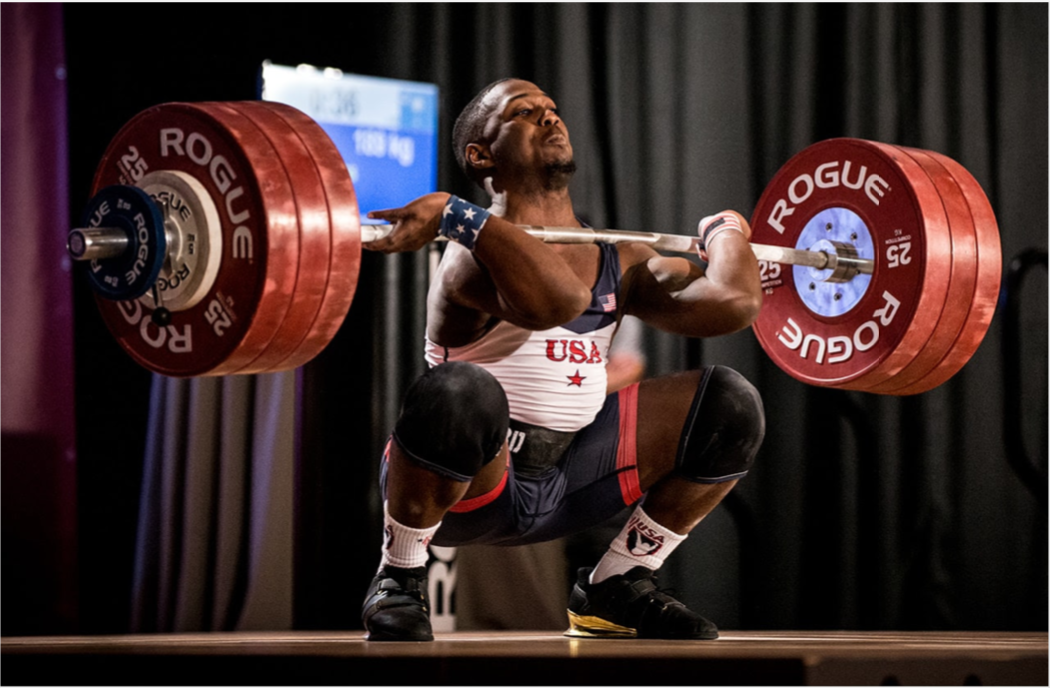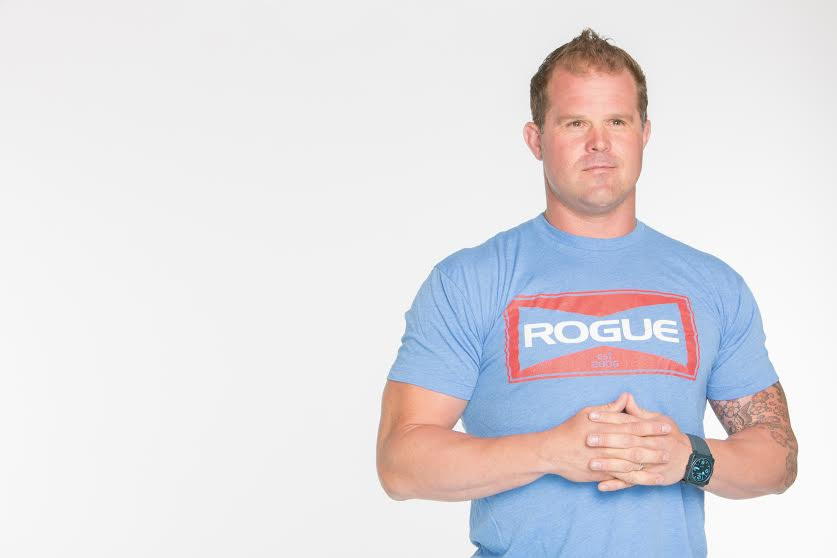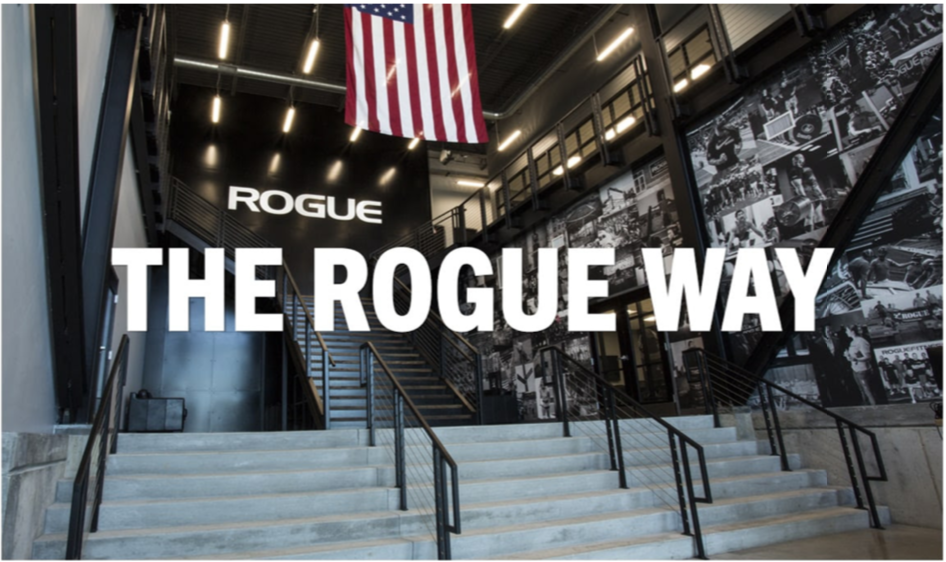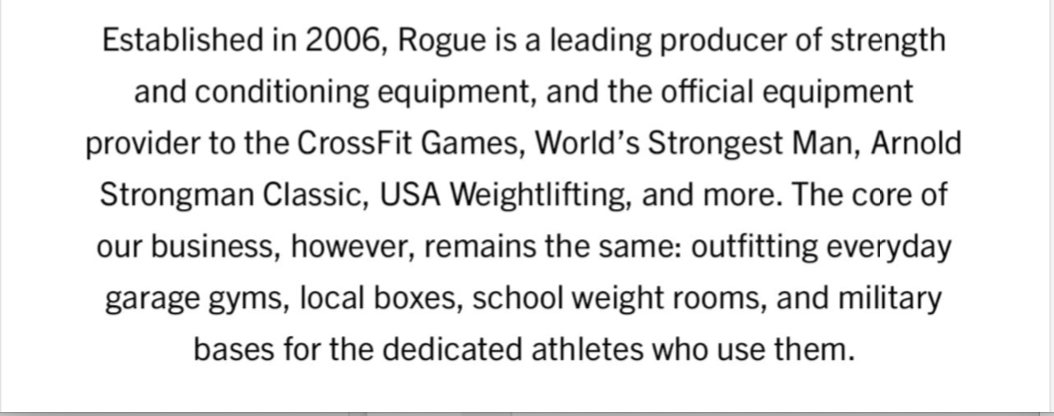Love Letter to Rogue Fitness with Strings Attached

Dear Rogue Fitness,
If ever there were a brand I believed I could do some of my best work for, it’s yours. You live in the crosshairs of all my experiences. Not only am a long-time lifter, but I ran gyms for ten years, and I’ve been writing copy for ecommerce brands for almost as long as I ran gyms. You strike the center of my heart with all the accuracy of Robin Hood and the tenderness of Cupid.
… That’s how the letter would begin, but this is a blog so I’ll stop being silly. Serious time.
It’s safe to say, I dig Rogue. But, that only makes me a wee voice in a worldwide symphony of fans. Rogue commands legions upon legions of attention.
For all the wonderful aspects of what Rogue creates — not only the equipment but the burgeoning mountain of opportunities inside and outside their immediate scope of business — their email marketing efforts leave me wondering... what the HECK happened?
Over the last few months, I took steps to audit Rogue’s email marketing. First, I added myself to Rogue Fitness’s email list, and more recently I created a user account. I shopped specific items and loaded a cart with cool stuff. I even entered my mailing address before stopping the sale.
Hey, I’m a hot lead, baby.
This is the story of what I found via those efforts, and what else could have happened. But, first…
How CrossFit and I connect

Source: robbievogler.com
First, I’m gonna admit something that will land like a weight dropped at Planet Fitness so don’t panic. I’m not a CrossFit guy.
However, I do workout at a CrossFit gym because it’s the only gym in town where I can do Oly lifts and not get told to, “Please keep it down.”
And, to my credit, I’ve read — NAY! studied and understood — the book Becoming a Supple Leopard. If you’ve not heard of it, do you even CrossFit?
Supple Leopard is the closest thing to a bible in the CrossFit world. Its author, Kelly Starrett is at least a demi-god if not the prodigal one to CrossFit’s progenitors, Lauren, and Greg Glassman.
Not to mention, there’s a definite love connection between Starrett and Rogue made obvious by the fact that they quote him on their site.
Why I love Rogue

As Rogue has made its place at the high table of CrossFit equipment and game sponsorship, many hopeful manufacturers have tried to create something similar, but nope.
I use Rogue alongside its competitors every day at my gym. Not to say Rogue is flawless, but there is an obvious gap in quality. Rogue is the better brand all day long.
As far as the most often found brands at CrossFit boxes worldwide, Rogue is it. Any other brands you find are likely from a box trying to bootstrap their equipment in the beginning. CrossFit boxes might be cheap compared to machine gyms, but the volume of necessary toys is a drain on the bottom line.
Once those boot-strappers get up to speed, they tend to replace their aging equipment with Rogue equipment for all the obvious reasons.
- It lasts longer
- There is less chance of an injury
- CrossFitters expect to see it
But, forget about logical reasons. Rogue is the brand of CrossFit. (Sorry, Reebok.)
When you attend any of the CrossFit Games, you can expect to find two identifiers which will inform you that you’re in the right place:
- A bunch of people wearing matching workout clothes
- Rogue Fitness plastered on every surface.
The Rogue name is branded on the equipment. It’s on people’s lips. If they’re not bragging their latest PR, they’re talking about something related to Rogue because it’s ALL related to Rogue.
Sometimes I wonder if anyone accidentally calls it RogueFit instead of CrossFit. I’m sure it’s happened. Somewhere.
Anyway, on the advice of my email marketing guru, I started surveying Rogue from an email geek’s perspective late last year. First, I received a single welcome email, and then an ongoing series of promotional emails and newsletters.
Honestly... I was dumbfounded.
My best guess? Rogue doesn’t want any more money coming in because at this point the feds are getting suspicious. My other guess is that they simply pushed it to the back burner and it fell behind the oven.
What Happened
Rather than review all their promotional emails and newsletters, let’s isolate Rogue’s welcome email. There’s a lot in there, too much for one email, but it’s all so perfect for this teardown.
The email opens with a true hero image and a welcome to the team message. A welcome is perfect, better than a thank you.

This first email is what I would call email #1 of a lead nurture sequence. Reason being? I’m a lead, not a customer. That doesn’t mean a brand can’t welcome me to their circle, but calling me a customer feels a little slick.
Words matter. Instead start with, “We’re pleased to have you on the Rogue team.” Graduate me to customer when I’ve earned it.
The copy is center justified for the whole email, which is okay because it’s at least consistent, but not awesome because center justification is hard on the eyes.

Stick with a center justified header. That’s fine, but making my eyes find a new starting point for every line of the body copy is enough to make many readers skim, skip or swipe…. as in swipe away. Skimming is normal, but swipe? No.
The next section gives me some options about where to start, with images and links out to the site. Considering I’m not yet a customer, this seems to make sense.

There’s only one problem. Rogue has no idea what kind of customer I am. Thus, this email throws several options at me in hopes that something will stick.
A super clever move would’ve been to pre-segment me in the lead capture form with a list of segmenting options.
Tell us about yourself: I am…
︎ Founder of the best box in town
︎ Trainer to the stars
︎ Lone CrossFitter just trying to hit PRs erry day
That would’ve allowed their subsequent emails to be more catered to my preferences. Of course, there’s always time to update and refine those segments later, but for now, they could’ve sent a better targeted first shot over the bow.
If they’d at least grabbed my first name, the whole email could’ve been addressed to me, as in “Dear Damon.” It’s cheesy, sure, but the overwhelming research on this matter screams: IT WORKS.
Even better, compose the email as if it was from a real person. Bill Henniger, the CEO, would be perfect. I would know that it wasn’t actually from him, but like watching a good movie, I wouldn’t care.
Real enough for the story that I want to believe.
The email ends with two more sections. One invites me to follow Rogue on social media. This is smart but it should be in ONE email. The last section returns to the brand as a talking point and then ends on a CTA.
The CTA is a black button with a link out to the site, just like all the CTAs in the email. They match the color of the email, black.
Now, I like buttons, but they should be a different color to stand out. Pro move: that color should change to another color when moused over. This button does neither. More importantly, I wouldn’t have prioritized this message as the CTA, no the one we should end with on the first email.

How about this instead?
That CTA would be far more inviting if the copy started with a time-bound offer. If it was a message from Bill to me, then the whole package would’ve come together in a clear message: I want you as a customer, Damon.
After the personalized salutation and welcome, the body could have read something like this:
“Over the next few days, we’re gonna send you a series of emails to get you better acquainted with Rogue Fitness. Please reply directly to those emails with any thoughts or feedback you have. I’ll respond to you, personally.
Meanwhile, I want to make it easy for you to get your paws on your first equipment. How does 15% off your first purchase sound?”
The offer could start at 10% and escalate to 15% in a subsequent email, but you get the idea. This is ecommerce. The goal is sales. We all know it. As a recipient, I know why you’re emailing me. The question is, do you?
From there, the subsequent emails would have to do something else. Let the offer loom in the background.
Why Do More
Onboarding sequences function sorta like welcome mats. Sorta. People expect them, especially from ecommerce brands.
They can be so much more, though. They can be more like full-service lobbies, complete with holographic displays of the founder, video explainers of the brand’s history, and filtered water while you wait.
This is nothing to speak of other sequences, like abandoned cart or abandoned browser emails, but let’s not go there. We’ll stick with the first emails that a lead receives, as in a lead nurture sequence.
What many businesses assume, incorrectly, is that a true fan will either know everything worth knowing about the brand or they will check out the site to learn more.
Fun fact: People don’t love your site as much as you do.
Yes, I know, I know. You spent so much time and money on it. Don’t be mad. You had to do that for all the same reasons that brick and mortars have to put up awnings and keep their parking lots clean. It’s only a problem when these tidbits have been left unattended.
Websites are the welcome mat. A lead nurture series is your on-the-floor salesperson. And, just like in belly-to-belly sales, there’s an art to being informative and helpful without being pushy.
The rest of the emails could flow something like this:
- Email from CEO (Already covered)
- Introduce the founders or team members
- Our story
- Join us on social media
- Offer ending
- Last day of the offer
The emails could cover anything that the person needs to know to decide your brand is one that they love. They should all funnel your leads down a pathway to believing that your brand defines them in some way.
Then, you remind them of the offer, reminding them to take advantage of it. If they don’t buy something at that point, next!
With Rogue, after that initial email, I only received the aforementioned newsletters and promos. There was no abandoned browser series, and no abandoned cart emails despite my user behavior.
Although I can’t be sure, since I’ve not yet put down my credit card for a purchase, I assume this means Rogue is not capturing recurring revenue with win-back campaigns.
We’re talking about triggered emails for items like Monster Bands, VooDoo Bands, weight collars, and any other equipment that wears down. In my CrossFit box, that means pretty much everything at some cadence.
It seems like Rogue Fitness has left so much money on the table.
They may have these emails going out, and I’m just not seeing them. If they are, those emails would do much better if they did the upfront legwork with the emails they send at the top of the funnel. Those first emails set up a culture of emailing, but also build value in the brand.
Full confession: I want to do this work for Rogue, but that’s not why they should pursue my advice. I give it to anyone who cares for free, including you non-Rogue founders out there.
They should do it because I know they will appreciate the return on investment. It will come back in the form of revenue and brand growth. More sales means more branding. It’s more for everybody. Because Rogue Fitness is in the process of moving their whole operation to a much larger facility, more fits their current strategy.
Thanks for reading, Rogue Fitness, and everyone else.
Love,

Damon